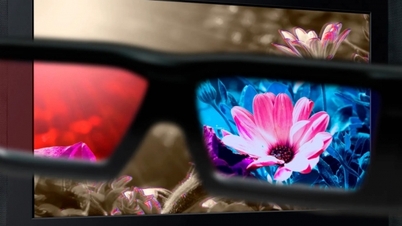Is epilepsy dangerous? Or is epilepsy dangerous, how does it affect health, how is it treated? Can this disease be cured?
Epilepsy is a disease related to the nervous system, caused by abnormalities in brain activity, leading to simultaneous stimulation of a group of nerve cells, creating sudden electrical discharges in the brain.
 |
| The risk of premature death in people with epilepsy can be three times higher than in normal people or people with certain other diseases. |
Stimulation of the cerebral cortex in different regions can lead to different epileptic symptoms such as convulsions, stiffening of limbs, sudden absence seizures, etc.
Epilepsy is not a mental illness, because apart from the times when experiencing seizures, the patient can still live, work and study normally.
An estimated 50 million people worldwide currently suffer from epilepsy, making it one of the most common neurological disorders.
Every year, about 5 million people worldwide are diagnosed with epilepsy. That makes many people wonder if epilepsy is dangerous and can it be cured?
In many cases, epilepsy can be cured if diagnosed and treated promptly and the patient complies with the treatment regimen.
Depending on the case and condition, the doctor will prescribe treatment by using medication, surgery, combined with changes in lifestyle, living habits, diet, etc. The patient can return to normal life.
It is important that people with epilepsy are evaluated by a doctor to determine the severity of their condition, as there are different types of epilepsy. Generally, the fewer seizures a person has and the milder their seizures and convulsions, the less likely they are to develop serious problems.
The risk of premature death in people with epilepsy can be three times higher than in people without epilepsy or with certain other diseases. People with epilepsy who are not treated or controlled have a higher risk of death than people with treated epilepsy.
People with epilepsy tend to have more physical problems (such as bruises and broken bones due to trauma related to seizures). Epilepsy can put people at risk when participating in traffic, falling, hitting their heads, etc.
It can also lead to some psychological problems such as depression, stress, etc. A small number of people with epilepsy may die from underlying neurological conditions, such as brain tumors.
There have been cases of people with epilepsy dying suddenly from unknown causes. This is called Sudden Unexpected Death in Epilepsy (SUDEP) and usually occurs while the person is sleeping.
Several studies have shown that SUDEP is the result of a seizure and occurs primarily in people with difficult-to-treat epilepsy, intellectual disability, tonic-clonic seizures, and a high frequency of seizures. People with epilepsy who frequently have nocturnal seizures are also at increased risk of dying from SUDEP.
A seizure lasting longer than 5 minutes can be life-threatening and cause permanent brain damage. Children who have had a seizure are at risk of dying from seizure-related problems, including SUDEP. This risk is higher in children whose seizures do not go into remission.
In addition to knowing whether epilepsy is dangerous, each person needs to know how to handle and provide first aid in case someone is found to have epilepsy. You can refer to the following basic first aid steps:
Help people with epilepsy breathe easier by loosening their collars, ties, etc.
Use soft objects to raise the patient's head, and place the patient on his side, avoiding moving the patient to another position. To avoid injury during a seizure, remove objects from around the patient.
Do not attempt to “wake up” an epileptic by shaking or screaming, and do not restrain the person during a seizure.
Do not give food or drink to an epileptic patient who is having a seizure to avoid choking or other injuries. Also, do not put anything in the epileptic patient's mouth.
Monitor and record the patient's symptoms during a seizure to notify the doctor or patient.
If the seizure lasts longer than 5 minutes, call an ambulance immediately. If the seizure occurs again shortly after the seizure ends, you should also go to the hospital for examination.
It is best for the patient to go to a medical facility for examination when the seizure ends.
Can epilepsy be cured? According to Dr. Nguyen Phuong Trang, Tam Anh General Hospital, Ho Chi Minh City, epilepsy is a disease that can be treated through methods such as using drugs, surgery, etc. The sooner the patient begins treatment, the higher the chance of successful treatment.
Anti-seizure medications can help keep the condition under control. Many people can return to a normal life after taking these medications.
In cases where surgery is required to treat epilepsy, patients should avoid delaying treatment, as brain damage can spread, making surgery more difficult.
The question of whether epilepsy is dangerous has been answered, so how can we proactively prevent this disease? Each person can do some of the following to prevent epilepsy and protect their health:
Implementing adequate perinatal care can reduce the incidence of epilepsy in children born with birth trauma.
For children with high fever, seeing a doctor, taking medication, and applying methods to lower body temperature to an appropriate level can help reduce the risk of febrile seizures.
Preventing head injuries, such as reducing the risk of falls, traffic accidents, sports injuries, etc., is an effective way to help prevent post-traumatic epilepsy.
To prevent stroke-related epilepsy, you need to take measures to control and prevent high blood pressure, diabetes, obesity, not smoke, and avoid excessive alcohol use.
Central nervous system infections are common causes of epilepsy in tropical climates.
Taking measures to avoid infection and eliminate parasites may reduce the risk of developing epilepsy (e.g., epilepsy due to cysticercosis).
Everyone needs to proactively have regular neurological health check-ups to screen and promptly detect abnormalities that can lead to epilepsy.
Source: https://baodautu.vn/benh-dong-kinh-co-chua-duoc-khong-d222807.html


![[Photo] Binh Trieu 1 Bridge has been completed, raised by 1.1m, and will open to traffic at the end of November.](https://vphoto.vietnam.vn/thumb/1200x675/vietnam/resource/IMAGE/2025/10/2/a6549e2a3b5848a1ba76a1ded6141fae)





































































































Comment (0)